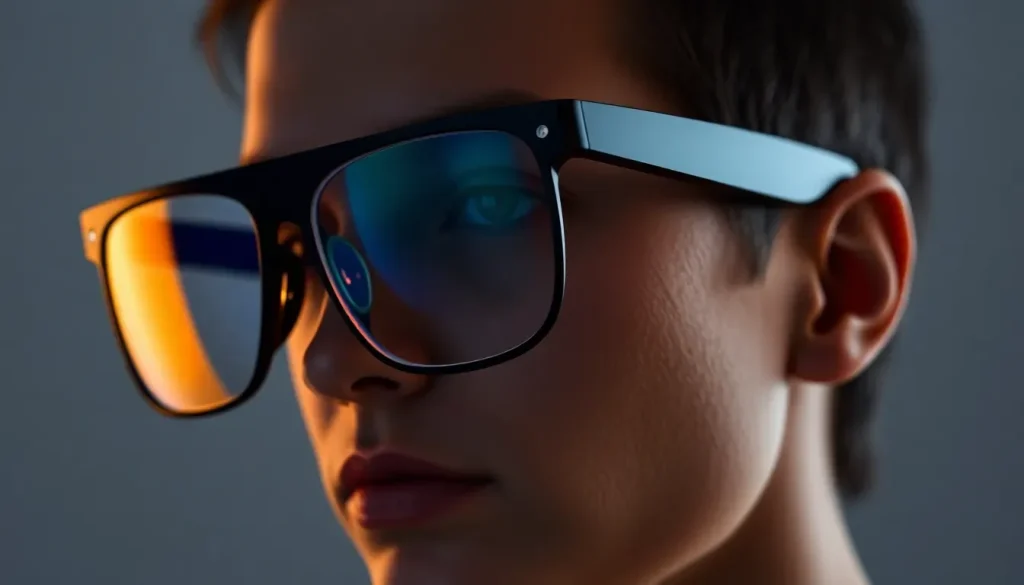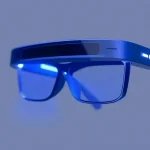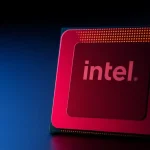Apple changes focus from Apple Vision Pro to smart glasses

The landscape of wearable technology is rapidly evolving, and Apple is keenly aware of the need to stay ahead in this competitive arena. With increasing interest in smart glasses, Apple is redirecting its resources to develop a product that could redefine the way we interact with digital content in our everyday lives. This article explores Apple's strategic shift from the more complex Vision Pro headset to the development of smart glasses, examining the implications for the company and its consumers.
- Understanding the shift from Apple Vision Pro to smart glasses
- What are Apple's smart glasses?
- Comparing smart glasses and AR glasses
- The implications of Apple's focus on smart glasses
- Future developments and Apple’s vision
- Potential market challenges and consumer adoption
- Conclusion: The future of wearable technology
Understanding the shift from Apple Vision Pro to smart glasses
Apple's Vision Pro, which launched in 2023, was intended to be a cutting-edge device for spatial computing, showcasing the potential of augmented reality (AR) and virtual reality (VR) in daily applications. However, recent reports suggest that the company is shifting its focus towards smart glasses, aiming to compete in a market that has gained traction thanks to devices like Ray-Ban's Meta glasses.
According to a Bloomberg report, Apple is diverting resources away from the Vision Pro project to concentrate on smart glasses development. This decision raises questions about the future of the Vision Pro, which was anticipated to be a lighter version introduced in 2027. While it's unclear if this release will be delayed, the shift indicates a strategic pivot in Apple's product roadmap.
Smart glasses are fundamentally different from the more sophisticated AR headsets like the Vision Pro. They typically feature a simplified technology stack, emphasizing practicality and ease of use. Apple's decision to reallocate resources might stem from the need to leverage its specialized teams to create a product that resonates with a broader audience.
What are Apple's smart glasses?
Apple's upcoming smart glasses, currently codenamed N50, are designed to work in conjunction with the iPhone, offering users a lightweight, hands-free experience. Unlike the Vision Pro, these glasses will not feature a display but will include cameras and voice interaction capabilities. This design choice allows Apple to position the smart glasses as a direct competitor to existing products like Ray-Ban Meta glasses.
The N50 smart glasses aim to provide streamlined functionalities, such as:
- Voice control interactions
- Camera integration for capturing photos and videos
- Seamless connectivity with the Apple ecosystem, including iPhones and AirPods
This strategic move is significant because it allows Apple to tap into a market where consumers are increasingly seeking lightweight, functional wearables that enhance their daily lives.
Comparing smart glasses and AR glasses
While both smart glasses and AR glasses share the common goal of enhancing user experience through augmented reality, the two categories are distinct in their capabilities and intended use. Smart glasses focus on practicality, offering basic functionalities without the complexity of a full AR headset.
In contrast, AR glasses are designed to overlay digital information onto the physical world, providing immersive experiences that require advanced technology. Apple's Vision Pro falls into this latter category, targeting a niche market that seeks high-end spatial computing capabilities.
Key differences between smart glasses and AR glasses include:
- Display: Smart glasses often lack a display, while AR glasses provide a visual interface.
- Functionality: Smart glasses primarily offer basic features such as voice commands, whereas AR glasses enable advanced interactions.
- Target Audience: Smart glasses appeal to casual users, while AR glasses are aimed at tech enthusiasts and professionals.
The implications of Apple's focus on smart glasses
By prioritizing the development of smart glasses, Apple is looking to capitalize on the growing demand for wearable technology. However, this shift also presents some challenges. The company faces fierce competition from existing players like Meta, which has established a foothold in the smart glasses market with its Ray-Ban collaboration.
Despite this, Apple's potential advantages include:
- Brand Trust: Consumers may feel more comfortable using Apple products, especially when it comes to privacy and data security.
- Seamless Integration: Apple's ecosystem allows for better connectivity and user experience across devices.
- Design Aesthetics: Apple has a reputation for creating stylish products, which may appeal to fashion-conscious consumers.
The smart glasses sector hasn't exploded in popularity like the Apple Watch or AirPods, but there is a clear demand for innovative wearables that enhance everyday experiences. Apple's entry into this market could catalyze broader adoption among consumers.
Future developments and Apple’s vision
Apple is not abandoning its ambitions in the AR space; rather, it is recalibrating its approach. The company is still working on future iterations of AR glasses that may include display capabilities, potentially debuting alongside their smart glasses by 2028.
As Apple continues to develop its product lines, it's also focusing on enhancing its software, with improvements expected in the Siri functionality and the introduction of new features that could benefit both the smart glasses and the Vision Pro ecosystem.
This dual approach allows Apple to maintain its commitment to spatial computing while also appealing to a broader audience with more accessible technology. The competition between Apple and Meta will be critical, as both companies look to innovate and capture market share in the burgeoning wearable tech space.
To further understand the potential impact of Apple's smart glasses, check out this insightful video:
Potential market challenges and consumer adoption
Despite Apple's potential advantages, several challenges may impact the adoption of its smart glasses:
- Consumer Perception: Users may have reservations about wearing devices that feature cameras and microphones.
- Price Point: If pricing is not competitive, consumers might opt for existing alternatives.
- Market Saturation: As more brands enter the smart glasses market, differentiating products becomes increasingly challenging.
Apple's ability to navigate these challenges will be crucial in ensuring the success of its smart glasses. The company must not only focus on technological advancements but also on addressing consumer concerns and effectively communicating the benefits of its new product.
Conclusion: The future of wearable technology
As Apple shifts its focus toward developing smart glasses, the company is poised to redefine its role in the wearable technology market. By leveraging its strengths and addressing consumer needs, Apple could emerge as a leader in this evolving landscape. The future of wearable technology is bright, and with Apple at the helm, we can expect innovative solutions that enhance our daily experiences.




Leave a Reply